Conversational Commerce with WhatsApp Product Catalog
Learn how to showcase and sell products on WhatsApp using the Conversations Inbox.
Customers using the Conversations Inbox can use the Commerce tab on the left menu to showcase and sell products on WhatsApp with the Product Catalog Messages feature.
With Commerce powered by Product Catalog Messages, customers can view products directly on WhatsApp and add their desired items to the embedded shopping cart without leaving the chat app. At the same time, the company can send a payment link, confirm the order, and even send out parcel shipment information as a follow-up.
In this tutorial, you will find:
- Prerequisites for Commerce on WhatsApp
- Overview of Commerce elements on the Conversations Inbox
- How to use Commerce on the Conversations Inbox
Prerequisites for Commerce on WhatsApp
To use the WhatsApp Business API for Commerce, you need to fulfill the following prerequisites:
1. Upload Inventory to Facebook
First, you need to upload the business inventory to Facebook using the Facebook Commerce Manager.
You can simply upload your catalog as a Google Sheet, so it’s automatically linked on your Facebook Commerce Manager and your linked WhatsApp Business Profile every time you update it.
2. Connect Your Catalog to WhatsApp
Connect the catalog to a WhatsApp Business Profile. It will be automatically linked to the Conversations Inbox.
Overview of Commerce elements on the Conversations Inbox
Once your inventory is uploaded on the Commerce Manager and connected to your WhatsApp Business Profile, you can start using the Commerce tab on the Conversations Inbox.
The Commerce elements are as follows:
Orders: under the Commerce tab, get an overview of all the orders placed by your customers. You can also sync this information in your CRM.
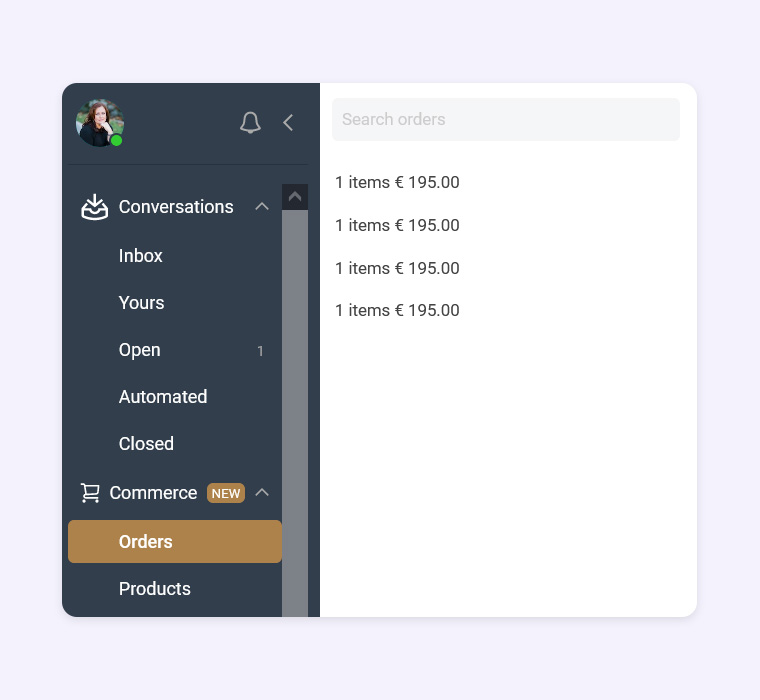
Products: under the Commerce tab, you can see the items in your inventory synched from the Commerce Manager. When clicking on an item, you can see the product details, incl: Description, price, etc., and the option to view it on the website.

Commerce on message field: the commerce function has been integrated into the message field. An agent clicking on this option will see all the products listed in your catalog and send the item to the customer.
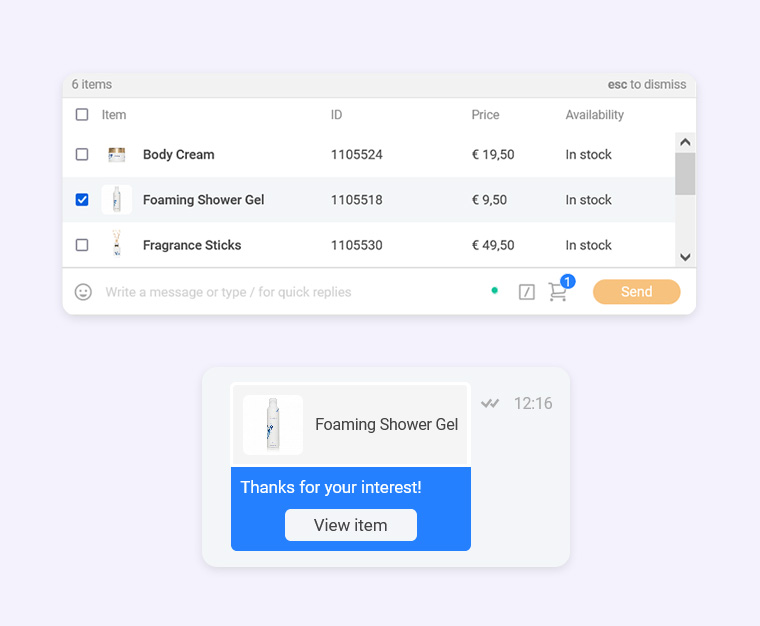
How to use Commerce on the Conversations Inbox
This is a general process for how the Commerce function is used:
1. The customer sends a message (or replies to a promotional message) asking about product details/availability
When the customer sends or replies to a message, this conversation is displayed in the general Inbox.
You can assign this conversation to an agent for manual conversation management or a virtual assistant.
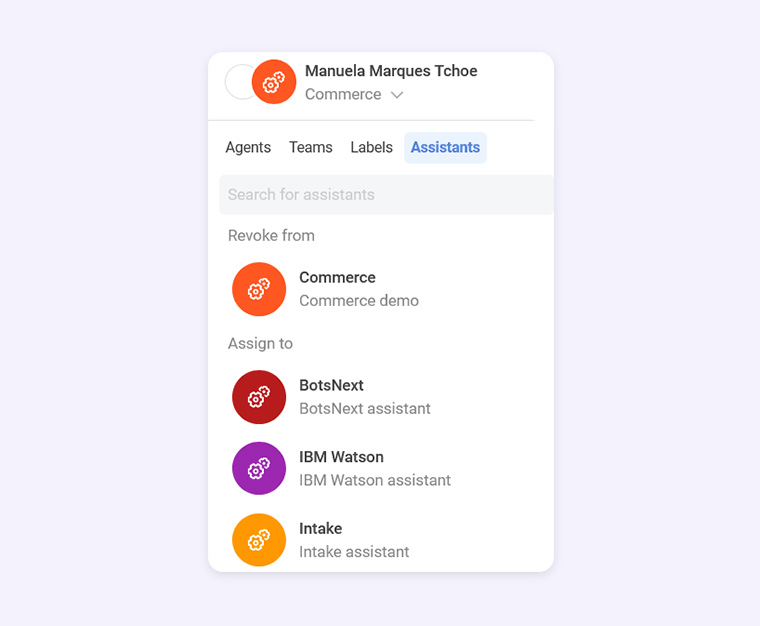
Before sending its product catalog, the company can filter the customer’s interest first. For example, send a quick-reply message with product categories that the customer can easily pick. In this case, since the business sells beauty products, the customer can choose between ‘body’ or ‘gifts’.
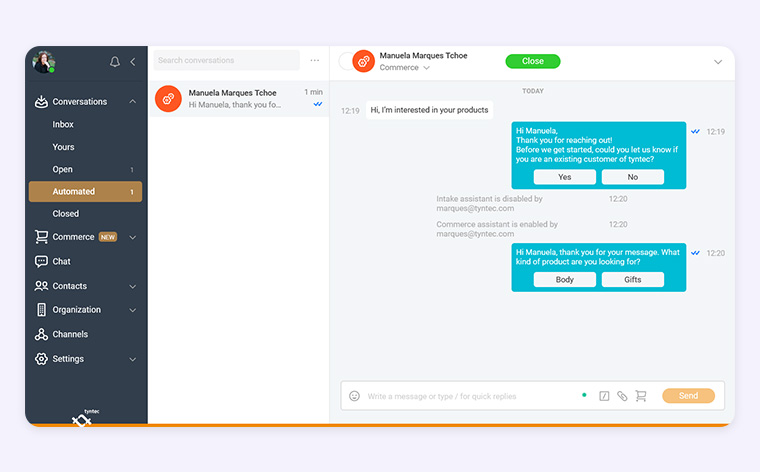
This is how the customer views it:
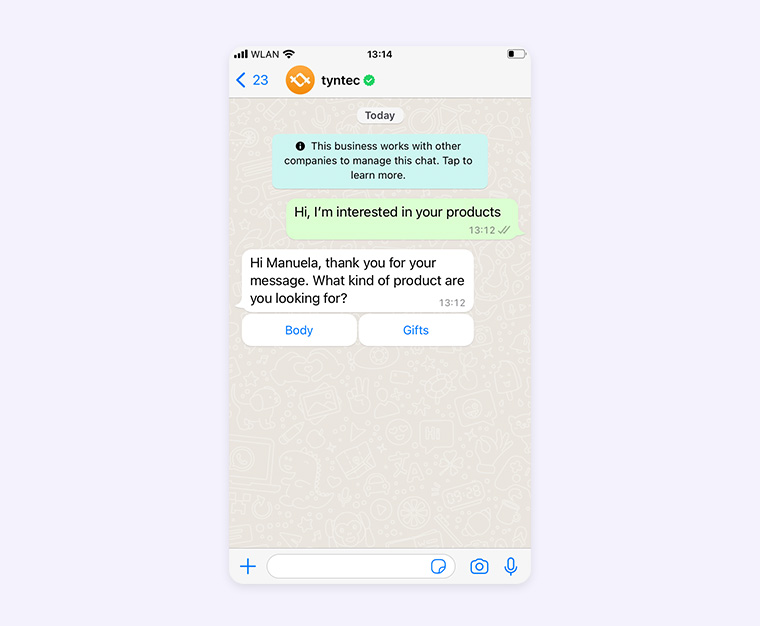
2. The business sends the product catalog
The customer clicks on ‘body’, which triggers the automated product catalog with all the items available for that category.
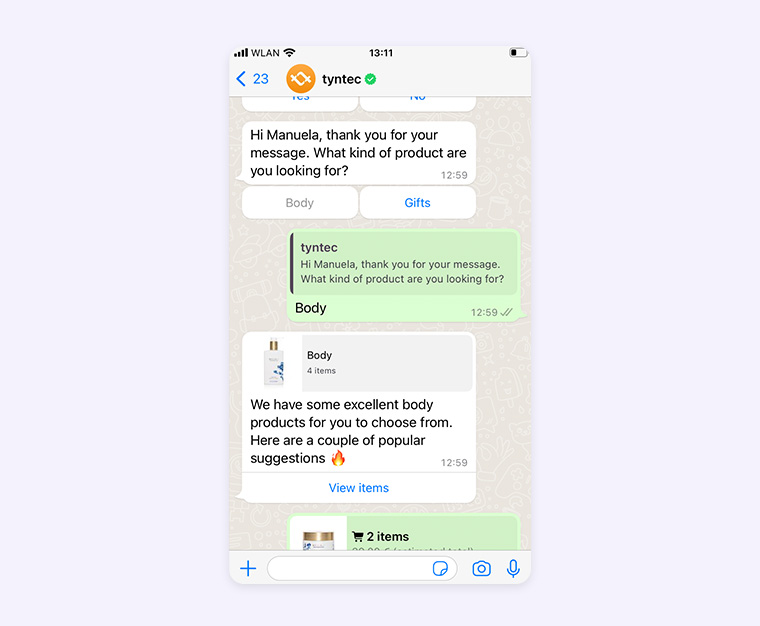
This is how the business sees the customer’s reply on the Conversations Inbox:
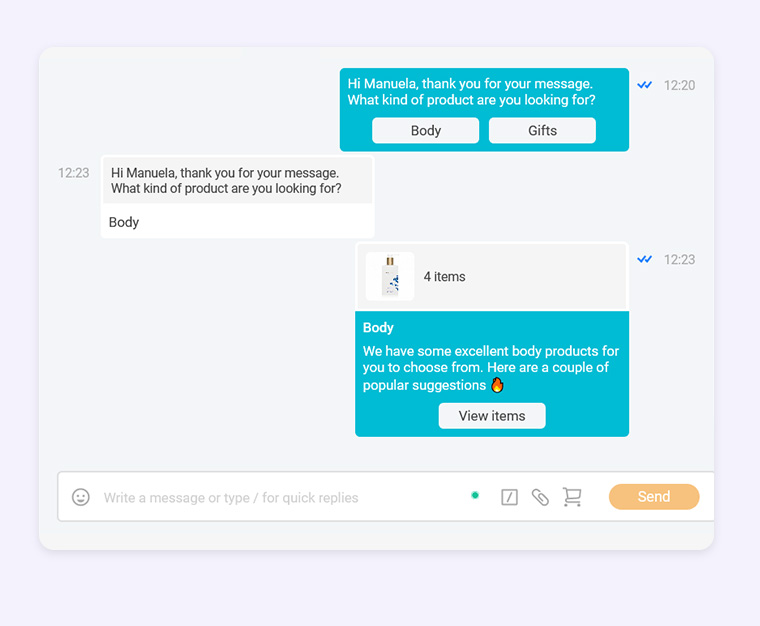
Alternatively, if the conversation is not automated, the agent can also send the products part of the category chosen by the customer.

Businesses have two options to share products when chatting with their customers:
- Multi-Product Messages: Messages containing a selection of up to 30 items from a business’ inventory.
- Single Product Messages: Messages with a single product item from the business’ inventory. The product is displayed in a Product Detail Page (PDP) format.
4. The customer clicks on the product catalog and checks the product details
The customer clicks to view all the products available. They can see a list of all items and, upon a click, can see a description and price for each product with a link to the website for more information.
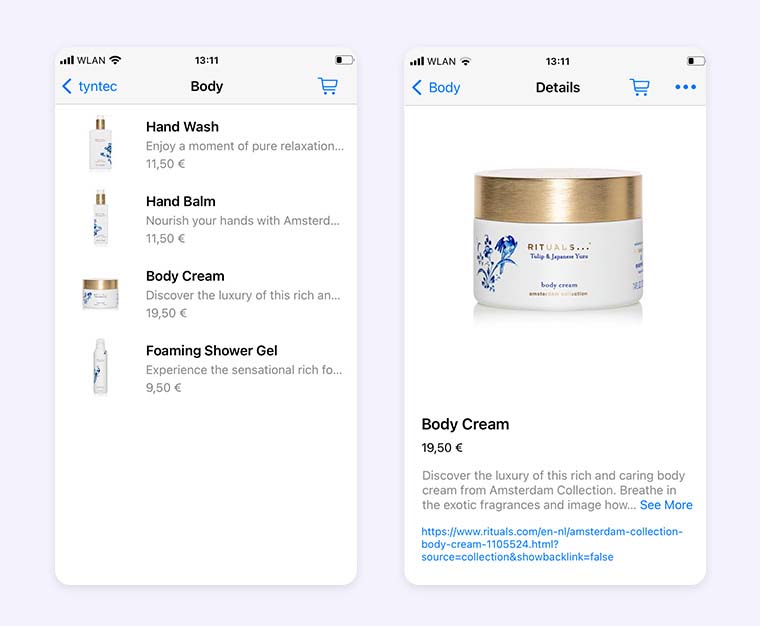
3. The customer selects desired products, and the business confirms the purchase
The customer can add the product to the cart on the Product Detail Page (PDP).
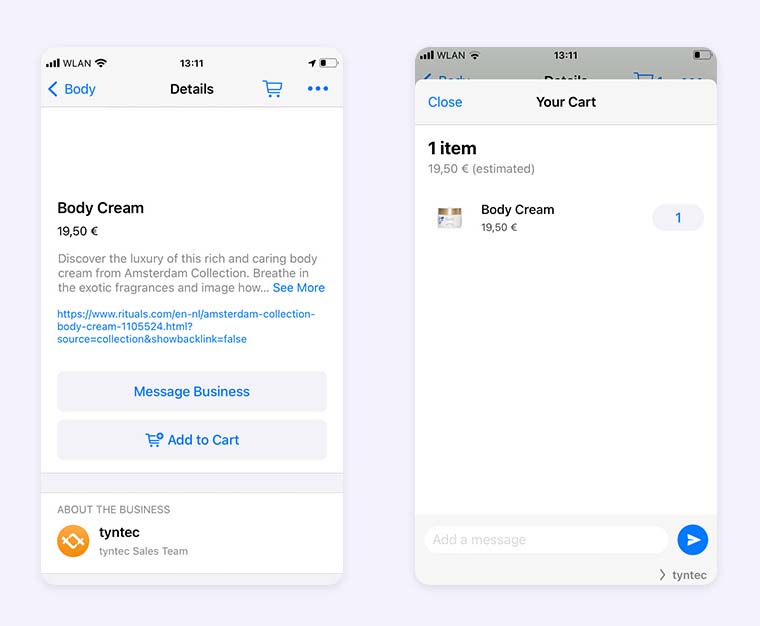
The customer can adapt the quantity in the shopping cart view and send the cart information to the company.
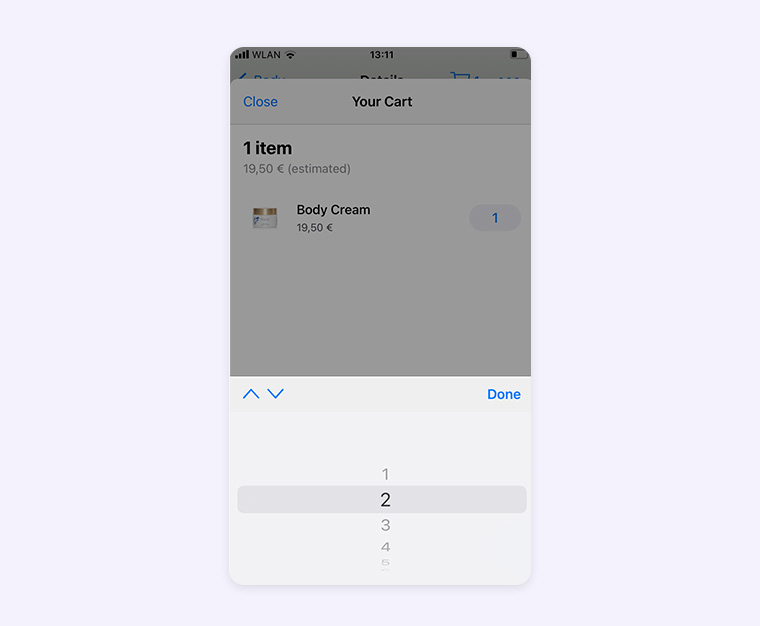
Then, the customer can send the cart to the company.
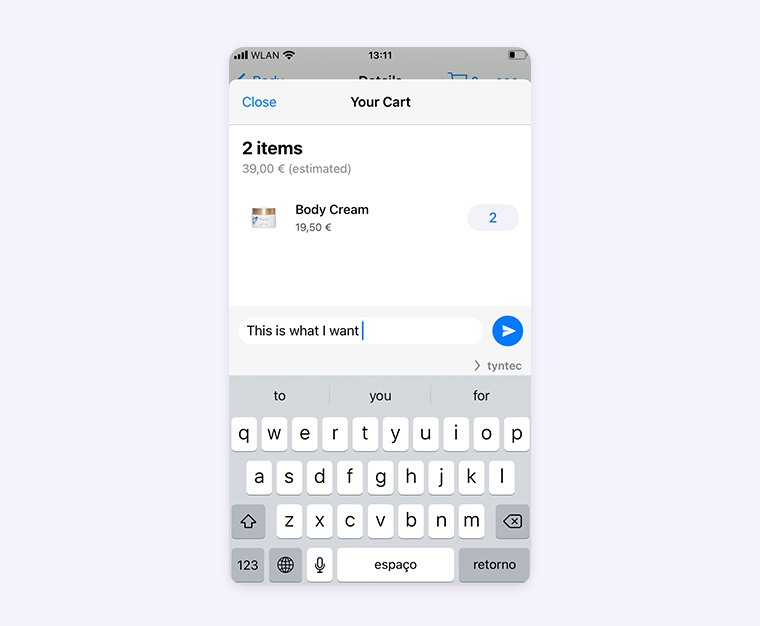
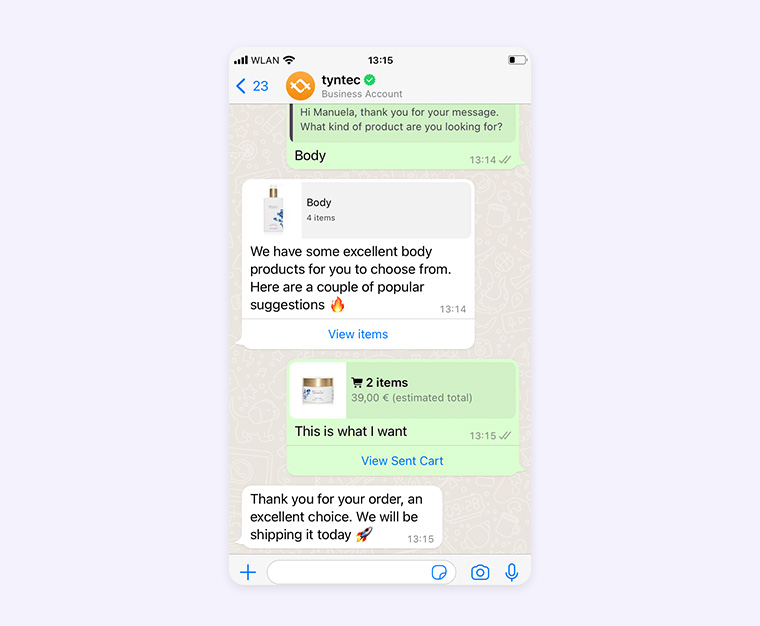
The bot or agent can reply with a payment link and an order confirmation.
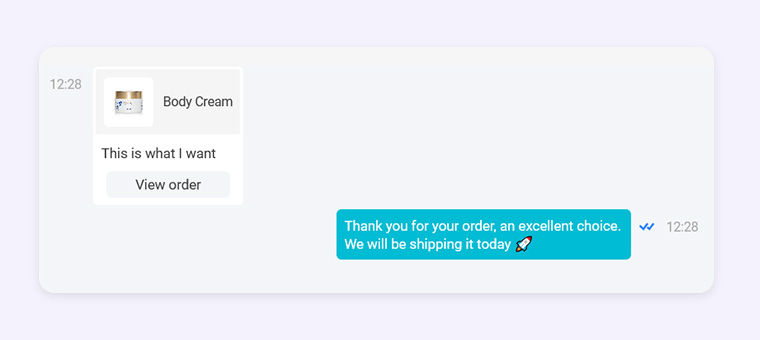
Depending on the company flow, you can also add shipping details, product tutorials, and feedback surveys to complete the sales cycle.
✉️ Do you have any questions about the Commerce tab on the Conversations Inbox? Get in touch with the Onboarding Team at support@tyntec.com.